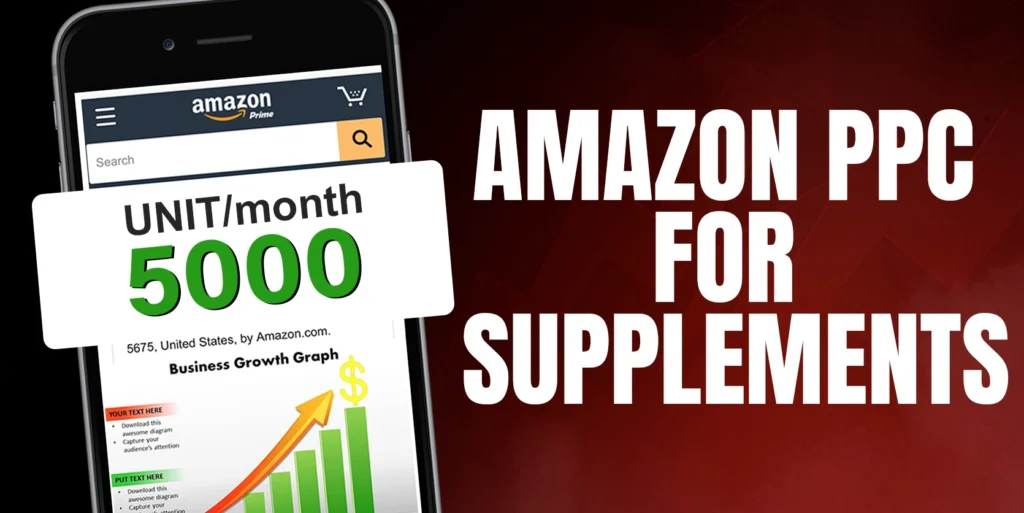Amazon Pay-Per-Click (PPC) advertising is a game-changer for sellers looking to boost visibility, increase sales, and dominate their niche. However, many new sellers enter the platform with high expectations and incomplete knowledge, making them vulnerable to widespread myths about Amazon PPC. These misconceptions often lead to poor strategy decisions, wasted ad spend, and ultimately, disappointing sales with a high Advertising Cost of Sale (ACOS).
Without understanding the real mechanics behind Amazon PPC, sellers may set unrealistic goals, bid aggressively without strategy, or rely on ineffective tactics that drain their budget. In this blog, we’ll debunk some of the most common Amazon PPC myths and uncover the real facts, helping you optimize your campaigns for better profitability and long-term success.
Myth #1: Impressions Go Down After the Holidays, Resulting in High ACoS
Fact: Post-holiday periods may see a shift in consumer behavior, but impressions don’t necessarily drop across all categories. Instead of assuming ACoS will rise, focus on data-driven adjustments like refining your bidding strategy, optimizing high-performing keywords, and targeting seasonal trends to maintain efficiency.

Myth #2: If Your Campaign’s ACoS is Rising High, You Need to Cut Off Your Budget
Fact: A high ACoS doesn’t always mean you should reduce your budget. Instead of cutting spending, analyze the underlying causes—poor keyword targeting, low conversion rates, or ineffective ad creatives. Optimizing campaigns and reallocating budget strategically can help control ACoS while maintaining sales volume.

Myth #3: Turn Off Your Advertising Campaigns If You Are Going Out of Stock
Fact: Pausing ads when inventory is low might seem logical, but it can harm long-term ranking and sales momentum. Instead, consider adjusting bids, limiting ad placements, or running low-stock strategies such as prioritizing high-margin products until restocking is complete.

Myth #4: The Highest Bid Always Wins the Ad Placement
Fact: Ad Rank is determined by multiple factors, not just bid amount. Amazon’s algorithm evaluates ad relevance, product listing quality, and historical performance. A well-optimized listing with a lower bid can still outrank a higher bid if it has better conversion potential.

Myth #5: Amazon PPC Directly Improves Organic Ranking
Fact: While PPC can drive more sales, which contributes to better organic ranking, it doesn’t directly boost it. Amazon’s A9 algorithm considers sales velocity, keyword relevancy, and customer experience. To enhance organic rankings, combine PPC with strong SEO, optimized listings, and excellent customer service.

Myth #6: More Keywords in a Campaign Means Better Performance
Fact: Adding too many keywords can dilute ad spend and hurt performance. Instead, focus on highly relevant, high-converting keywords. Regularly analyze search term reports, pause low-performing keywords, and refine your targeting for better efficiency.
Myth #7: Once a PPC Campaign is Profitable, No Further Optimization Is Needed
Fact: Amazon PPC requires ongoing optimization. Market trends, competition, and customer behavior change over time, making continuous bid adjustments, keyword refinements, and ad creative updates essential for maintaining long-term profitability.

Myth #8: Running PPC for a Bestseller is Unnecessary
Fact: Even bestsellers need PPC to defend their position and prevent competitors from capturing market share. Sponsored Brand and Sponsored Display ads can help reinforce brand visibility and customer retention, ensuring continued dominance in the category.
Myth #9: Lowering Bids Always Reduces ACoS
Fact: While lowering bids can control costs, it can also reduce ad visibility and sales. Instead of blindly lowering bids, analyze data to identify profitable keywords and adjust bids strategically based on performance and competition levels.
Myth #10: Automatic Campaigns Are a Waste of Budget
Fact: Automatic campaigns can be valuable for keyword discovery and customer behavior insights. When used correctly, they help identify high-performing search terms, which can be transferred into manual campaigns for better targeting and cost control. Regularly reviewing auto campaign reports ensures efficient spending and campaign optimization.

By debunking these myths, advertisers can make informed decisions, maximize ad performance, and drive sustainable growth on Amazon.
Conclusion
Amazon PPC is a powerful tool, but falling for common myths can lead to ineffective ad strategies and wasted budget. By understanding the facts, sellers can optimize their PPC campaigns effectively and maximize profitability. Regular monitoring, data-driven decision-making, and continuous optimization are the keys to Amazon PPC success.
Are you struggling with Amazon PPC? At Ecomclips, we specialize in managing and optimizing Amazon PPC campaigns for maximum ROI. Contact us today for a free consultation!
Success in Amazon PPC is about more than just running ads. It’s about choosing the right Amazon PPC keywords strategy and executing it with precision. By focusing on profitable keywords, monitoring metrics like ACOS and ROAS, and leveraging tools and expertise, you can transform your ad campaigns into a sales powerhouse.
Ready to see real results? Contact EcomClips today and let us help you achieve your business goals! At Ecomclips, we’ve been helping Amazon sellers grow their sales and capture market share through a combination of PPC and organic SEO strategies. If you’re looking to boost your Amazon sales or expand your brand’s presence, feel free to reach out to us at info@ecomclips.com.
We also offer free Amazon store and account audits for both PPC and SEO. If you’d like us to review your account and provide insights on how to improve performance, just contact us via email. We’re always ready to assist with personalized solutions, tailored to help you manage your PPC campaigns and enhance your profitability. For any other questions or support, don’t hesitate to drop a comment below. We’re here to help you succeed!


